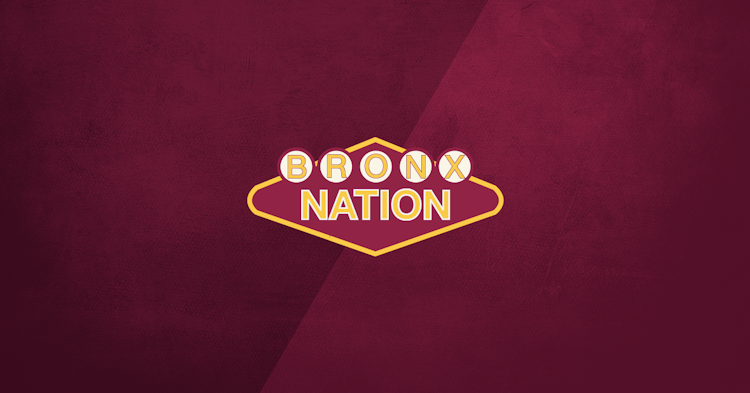The Good, The Bad and The Future: Brisbane Broncos
Last updated: Sep 15, 2020, 5:57AM | Published: Sep 14, 2020, 10:13PM
The Brisbane Broncos have it better than most overall.
They're a regular NRL Finals side, they always have talent capable of catching fire and catapulting them into premiership contention, while the next 'Alf', Webcke and Lockyer is never too far away from making their debut.
Footy fans don't get many opportunities to talk down at the Broncos faithful. Maybe a week here or there, but never across four months as we've seen in 2020.
Brisbane's attack is the worst in the NRL through 18 games.
So too, is their defence.
Two wins to start the season papered over the sort of cracks that have since seen the coach sacked, the worst on-field season in the club's history and one of the best young talents in the game sign elsewhere.
The good is that the coach will change, the bad is everything the Broncos did on the field in 2020, and while David Fifita will spend his time down the M1 for 2021 onwards, there is still enough talent at the club to be hopeful for the future.
RELATED: Check out Stats Insider's Updated NRL Futures
The Good
It isn't ideal for anybody, but the Anthony Seibold era is over in Brisbane.
Following decades of success and a proud history of consistent finals appearances, Seibold left the building and the worst ever Broncos team in his wake. His "game model" that helped him seduce the Broncos board into ousting Wayne Bennett became his downfall as his failure to adjust to the playing group resulted in more of the same.
Seibold had his style. And while it worked at South Sydney in 2018, he had Adam Reynolds, Cody Walker and Damian Cook in key play-making positions. The pack wasn't short of leadership and tough carries when they came under pressure with Sam Burgess and John Sutton in the side. Out wide, Origin reps Dane Gagai and Greg Inglis flanked in the centres, while Robert Jenningsand Campbell Graham were often required to do little more than dot the ball down across the line.
Turning up to a very different playing group in Brisbane, Seibold tried to do the same.
Seibold's major signing, Brodie Croft, is the stereotypical Melbourne Storm off-cast. Almost everybody got sucked into the Croft/Cooper Cronk hype to start with, simply because he's a little bloke that looks somewhat similar if you're scanning the field and glance past him. In reality, he isn't a first-grade footballer. It took Seibold until Round 10 to figure that out.
Seibold arrived to the best young forward pack in the NRL. "Young" is the word Seibold seems to have missed, though. They've lacked leadership through the middle for two seasons now and haven't shown any signs of change throughout.
Out the back, Corey Oates is in career-worst form and Jamayne Isaako was made the scapegoat in Round 7 and used as a bench utility. Tesi Niu was thrown in the deep end to replace the harshly dropped Isaakoand hooked 66 minutes into his first start. Another Seibold signing, Jesse Arthars, was given the first crack ahead of promising youngsters Herbie Farnworth and Xavier Coates only to be dropped four rounds in after scoring one try and leading the competition in try causes at the time.
Yet while all of this happened - clear and obvious style, cohesion, confidence and leadership issues - the game model remained the same. The Broncos continued to train at the same high intensity during the week until they nailed the play drawn up on the whiteboard. That may have worked for a Rabbitohs side laden with experience. It clearly wasn't working for a young side lacking basic skills and football IQ in true in-game situations.
Brisbane's lack of game plan within the all-important game model became more evident as the season wore on. Seibold's press conferenceafter the Wests Tigers thrashed his side 48-0 in Round 10 is particularly telling.
“We’ve got a group there that obviously can’t handle any chaos or anything going against them. When things go our way we play some decent footy."
When things go their way, say, at training in an unopposed session, where you can call a mulligan on a failed shift, sure, you can play some decent footy. Time and time again, one try, a poor error or string of penalties during a game threw the team into disarray; the players couldn't ask the referee to try again. Instead, they looked around at each other lost and confused at how something feeling so good on a Wednesday could be going so wrong on a Friday night.
The definition of insanity is doing the same thing over and over, but expecting different results.
Seibold's approach wasn't working back in June and went largely unchanged until he was given his marching orders.
Through 40 games with a 35% winning record, Seibold and his game model have left Red Hill just two years into a five-year tenure everybody at the club claimed would end with a premiership.
Seibold's departure, remarkably for a club of Brisbane's stature, is a big part of the good in 2020.
The lack of public support, while a poor reflection on Seibold and his command of the dressing room, does give hope to the idea that a new face can get the club back on track in 2021.
Confusion around the coach and poor decision making from the Broncos front office has cost them David Fifita, but there is still game-winning talent on the roster.
Payne Haas is the best young prop in rugby league. Still only 20-years old, he has carried this team as far as he can for 178 running metres per game. He has played fewer than 60 minutes only once all season and completed the full 80 in eight of his 16 games.
Kotoni Staggs, while a defensive liability, has often been Brisbane's only hope in attack. His ten tries, 42 tackle breaks, 12 line breaks and 104 running metres has been the Broncos most consistent source of attack in the 12 games he has played. A competent middle and reliable structure inside him would only make Staggs more dangerous.
Tom Dearden is where the Broncos begin to develop the structures inside Staggs. He is the long-term halfback of the club and has offered more in his ten games this season than Croft has in 14despite the latter being vastly more experienced and expected to be Seibold's game manager.
Unlike Croft, Dearden engages the line when he moves the ball. A large problem with the Broncos game plan is the fact their wide-ranging shifts, which have looked good at times, are easy to defend given their halfback is shovelling the ball along without promoting the slightest bit of uncertainty in the defence. Dearden averages 2.9 line engagements per game while Croft doesn't rank inside the top-50 in the competition. Meanwhile, the 19-year-old gets his hands on the ball and provides more as a traditional half (Croft's apparent strength's) than the former Storm halfback ever has throughout his first season at the club.
In Haas, Staggs and Dearden, the Broncos have a core trio to build around. Anthony Milford is still only 26-years old and may benefit from a change at the top more than anybody. Tevita Pangai Jr, Matt Lodge, Jake Turpin, Herbie Farnworth, Thomas Flegler, Jamayne Isaako, Tesi Niuand Jordan Riki are all capable or growing footballers that wouldn't look out of place in a top tier club.
While losing Fifita could be a defining moment of the club's history and one that should trigger a clearout at the top, Brisbane's next coach will walk into a team that is capable of making the finals in 2021.
RELATED: NRL 2020: Stats Insider's Team Of The Month for August
The Bad
The bad is no secret and doesn't need a lot of explaining.
One number stands out amongst them all to highlight just how bad the Broncos have been in 2020: 31.4 points conceded per game.
It's the worst mark in the competition, and Brisbane's worst ever.
There has been little resilience all season with no team conceding more tries through the middle than the 23 allowed through the Broncos. They've been poor from sideline to sideline.
Some of the lowlights:
- The 59-0 loss to the Roosters in Round 4 is when the issues became clear.
- The Titans averaged 11.1 points per game before putting 30 points on the Broncos in Round 7.
- Losing 48-0 to a Tigers side that won't play finals football in 2020.
- Conceding 46 points against the Storm a week later.
- Losing 58-12 to the Roosters in Round 16 for a -105 PD against them for the season.
- Losing to the Titans twice in a season for the first time.
This once dangerous Broncos attack has averaged just 13.3 points per game this season. After Bennett's Broncos scored 30 points five times in his last season at the club, Seibold's attacking game model hit the mark once throughout his 40-game tenure.
Discipline, yardage, errors and predictable shifts make for the worst attack in the NRL in 2020.
| Per Game | 2020 Rank | |
|---|---|---|
| Points | 13.3 | 16th |
| Running metres | 1,449m | 16th |
| Possession | 46.3% | 16th |
| Line breaks | 2.9 | 15th |
| Tackle breaks | 29.0 | 9th |
| Offloads | 9.4 | 9th |
| Errors | 10.5 | 10th |
| Penalties conceded | 6.3 | 1st (most) |
| Completion rate | 77.8% | 11th |
The numbers on both sides of the ball tell the story for the Broncos.
Historically awful and beyond lucky not to be in possession of their first-ever wooden spoon, the powerhouse club is the worst club in Queensland and an eye-sore we've not seen since the 2016 Newcastle Knights.
The Future
With the talent they have on the roster right now along with the opportunities to sign young players given their location and standing in Queensland, the Broncos have hit rock bottom in 2020.
This is as bad as it will get for the club.
Improvements in 2021 may be minimal, but a fresh face (whoever it might be) and the memories of this current campaign will make a difference. There is too much talent in the roster for the Broncos to be in contention for the wooden spoon across back-to-back seasons.
Dearden, Staggs and Haas will be better for the games under their belt, while Pangai Jr has a point to prove in 2021 and Lodge can spend the off-season getting fit. The only way is up for the likes of Milford and Oates who enter what is typically a player's prime years in career-worst form.
Talks around a "rebuild" have already begun. While the Broncos more or less tore the place down and caused this rebuild themselves, they aren't a club that will need long to attract finals-level talent and return to the Top 8.
Did you enjoy this article? Join our free mailing list to get the best content delivered straight to your inbox, or join the conversation by leaving a comment below or on the Stats Insider Twitter or Facebook page.




